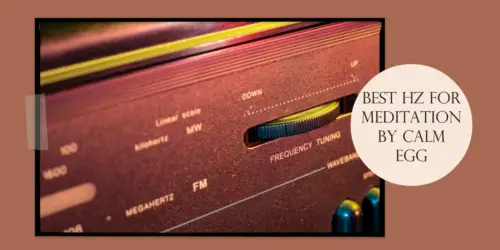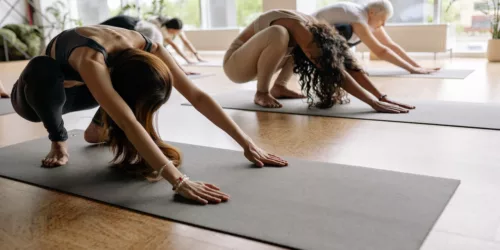Whole Body Breathing Meditation : The Complete Guide

Taking a few moments to focus on your breathing can be profoundly relaxing and centering. But moving beyond just your lungs to experience whole body breathing meditation can deepen awareness and cultivate greater mind-body harmony.
In this comprehensive guide, learn how to practice whole body breathing, its extensive benefits, and how this form of meditation heals both physically and mentally. With some simple guidance, you can easily integrate whole body breathing into your daily life or meditation routine. Read on to breathe more consciously from head to toe.
What is Whole Body Breathing Meditation?
Whole body breathing meditation involves using the breath to foster a fuller mind-body connection. As you inhale and exhale, you carefully observe the sensations of breath moving through different areas of your body.
Rather than breathing shallowly just into your chest, whole body breathing fills the lungs deeply down through the abdomen. The inhale and exhale are experienced as flowing rhythms expanding and contracting through the entire body.
This practice cultivates breath awareness beyond just the respiratory system to encompass your whole physical form. Deepening awareness of your body through the breath builds mindfulness and relaxation.
Some traditions describing this practice refer to it as “complete breathing” or “yoniso manasikara”, which translates to “thorough attention” or “wise attention” to the breath.
The origins of conscious full body breathing as meditation trace back to ancient yogic and Buddhist contemplative practices. But its calming benefits make it a key mindfulness technique today for stress management and mental health.
How to Practice Whole Body Breathing Meditation
Here is a simple step-by-step guide to practicing whole body breathing:
- Adopt a comfortable seated posture with upright spine.
- Relax your body without slouching. Close your eyes gently or rest them softly downward.
- Bring full attention to your natural breath. Observe a few cycles of normal breathing.
- On your next inhale, consciously draw breath down into the abdomen, feeling expansion around your navel.
- On the exhale, feel your abdomen gently contract, expelling air up and out.
- Expand your awareness to notice how this abdominal breath ripples up through the ribcage, chest, and collar bones on each cycle.
- Feel how the inhale swells the body subtly up from pelvis to shoulders. The exhale releases back down.
- Focus on the sensations of breath flowing smoothly through the entire body like waves.
- When your mind wanders, gently return focus to the body and breath.
- Continue for 5-15 minutes, then take time to observe any sensations as you come out of meditation.
The key is keeping breath awareness anchored in physical sensations while minimizing mental commentary about the experience. With practice, whole body breathing becomes effortless.
The Benefits of Whole Body Breathing Meditation
Recent scientific research confirms what contemplative traditions have long known – conscious full body breathing offers profound mind-body benefits:
Reduces Stress: By triggering the relaxation response, whole body breathing counters the fight-or-flight response to stress. Studies show conscious breathing reduces cortisol, heart rate, and blood pressure.
Eases Anxiety: Focusing awareness on the reliable rhythmic sensations of breath leaves less mental space for worries and rumination. Whole body breathing lessens anxiety.
Enhances Mindfulness: Keeping attention tuned into physical sensations in the present moment, rather than mental chatter, builds mindfulness skills.
Deepens Mind-Body Connection: Whole body breathing enhances harmony between mental and physical processes, activating the body’s innate self-healing abilities.
Boosts Energy: Full yogic breaths maximize oxygenation, improving respiratory function and increasing vital energy.
Promotes Parasympathetic Activation: Slow deep breathing stimulates the parasympathetic nervous system responsible for rest, relaxation, digestion, and immunity.
Improves Sleep: Calming whole body breathing meditation helps induce the relaxation required for restful sleep.
Supports Healing: Through improved oxygenation and immune function, conscious breathing boosts healing from illness, injury, or surgery.
Increases Focus and Concentration: The mental discipline of maintaining breath awareness stabilizes attention, countering mind wandering.
Cultivates Body Awareness: Tuning into the physical sensations of breathing builds connection with and understanding of your body.
Whole Body Breathing Techniques and Variations
Once you get the basic practice down, try modifying your whole body breathing in different ways:
- Count breaths: Count each inhale and exhale up to 10, then repeat from 1. The mental counting helps sustain concentration.
- Visualize movement: Mentally visualize or feel the breath swirling into the body, gathering energy on the inhale and dispersing it on the exhale.
- Trace paths: On each inhale and exhale, trace the route of your breath through the nose, throat, lungs, abdomen and back up.
- Play with pace: Explore breathing faster or slower than normal and observe how it feels energetically.
- Use imagery: Imagine the breath as waves, wind, or light filling your body. Allow the image to evolve with each breath.
- Weight the exhale: Extend and deepen the exhale slightly more than the inhale to elicit relaxation.
- One-nostril breathing: Close off one nostril and do 5-10 cycles breathing in and out just through the open nostril, then switch sides.
- Body scan integration: After meditating, scan through body regions again, breathing into any areas that feel tight or disconnected.
Remember there are no rigid rules – find creative ways to maintain interest by shifting the focus or technique over time. Playing with different variations prevents the meditation from becoming rote or dull.
Integrating Whole Body Breathing Into Everyday Life
With regular practice, you can begin applying whole body breathing to calm and center yourself during daily activities:
- Morning ritual: Start your day with a few minutes of whole body breathing to set a relaxed, mindful tone.
- Before meetings or calls: Take a few full body breaths to clear your mind, destress, and focus.
- In the car: Waiting at a long light? Use the pause to close your eyes and connect with your breathing body.
- On your commute: Breathe slowly and deeply on public transit to claim some space and minimize stress.
- At your desk: Between tasks or when frustrated, re-center with some conscious abdominal breaths.
- Difficult conversations: Talking to your boss or partner? Full body breathing grounds you first.
- Before presentations: Slow deep breaths help calm nerves and sharpen focus right before stepping on stage.
- During workouts: Between sets or changing positions, use breath to sink deeper into your body.
- Waiting in line: Fill short wait times reconnecting with your breathing body rather than grabbing your phone.
Integrating brief 1-2 minute whole body breathing sessions throughout your routine helps build the meditation habit while keeping you centered.
How to Teach Whole Body Breathing Meditation to Others
As an meditation teacher, personal trainer, therapist, or health coach, teaching clients whole body breathing skills can enhance their self-care toolkit. Here are some tips:
- Guide people into a steady seated posture and relaxed state first
- Keep your instructions simple, concise, and descriptive. Avoid esoteric language.
- Offer clear sensory cues about how breath physically expands and releases through the body
- Weave in soothing imagery like waves, swirling, or sinking into the earth
- Demonstrate full body breathing yourself so they can mirror you
- Have them place their hands on their abdomen and chest to feel movement
- Suggest making the exhale a couple counts longer to relax
- Remind them that mind wandering is normal – gently return focus to the breath again and again
- Advise starting with just 5-10 minutes to avoid overwhelm
- Note common benefits such as reduced anxiety, blood pressure, pain levels
- Provide recorded whole body breathing audio guides for home practice
- Check-in and have them describe their experience after practicing together
Guiding others into awakening through their breathing bodies is a gift! With your support, whole body breathing can become their new go-to stress relief tool.
Apps, Books, and Resources to Learn More
Here are helpful resources for deepening your whole body breathing meditation practice:
Apps: Breathwrk, Breathing Zone, Prana Breath, Inscape, Mindfulness App
Books: “The Healing Power of the Breath” by Richard Brown, “Breath” by James Nestor, “How to Breathe” by Ashley Neese, “The Oxygen Advantage” by Patrick McKeown
CDs: Jon Kabat-Zinn’s Mindfulness for Beginners, Yoga Nidra Guided Meditations, Progressive Muscle Relaxation Exercise
Websites: Mindful.org, Calm.com, Breath-Body-Mind.com, Verywellmind.com
Classes: Yoga studios, meditation centers, breathwork workshops, somatic experiencing therapy
Remember, our breath is always right here, available to soothe and reconnect us to our present moment embodied experience. By tuning into the simple sensations of breathing from head to toe, you can tap into profound relaxation and inner peace.
Summary of the Key Benefits
In closing, here is a brief recap of the benefits of practicing whole body breathing meditation:
- Lowers stress and anxiety
- Activates relaxation response
- Builds mindfulness and focus
- Balances the nervous system
- Deepens mind-body connection
- Boosts energy and respiratory function
- Promotes immune function and healing
- Improves sleep quality
- Cultivates self-awareness
- Can be integrated anytime, anywhere
The basic practice involves simply being aware of your breath consciously expanding and contracting through your whole body on each inhale and exhale. Reclaim this healing mind-body synchrony that is your birthright! Your breathing body is always with you, ready to dissolve tension, connect you to the present, and illuminate your inner world.






